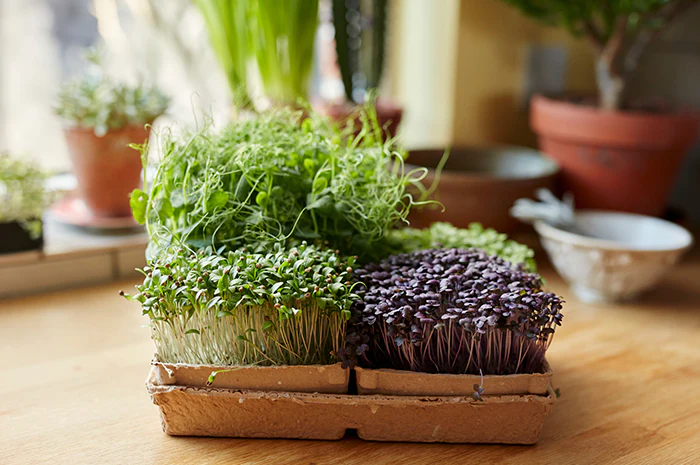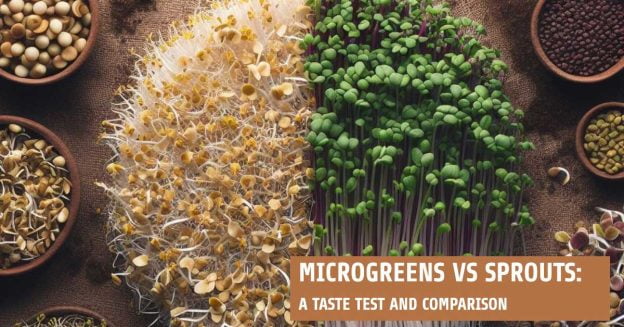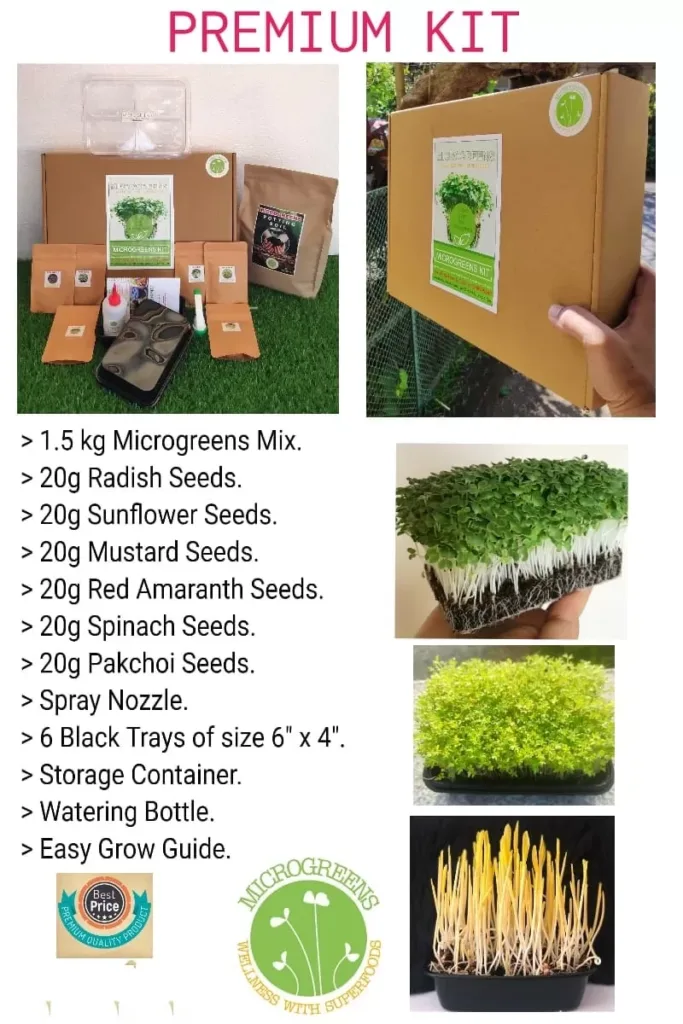Micro Green Seeds-Concentrated Nutrients For Health – 24
Micro Green Seeds
When picked at an early stage of life, usually 7 to 21 days after germination, microgreens are young, edible seedlings of vegetables and herbs. These little plants of Micro Green Seeds have a high concentration of nutrients, brilliant color’s, and lots of flavor.
Micro Green Seeds are a vital component of a healthy diet because, despite their diminutive size, they are praised for their potent nutritional content.

The little seeds of many vegetables and herbs that are cultivated especially to be harvested when they are in the microgreen stage are known as microgreen seeds. These seeds are picked for their rapid germination, fast development, and tasty, nutrient-dense microgreens that are produced.
The following are a few popular seed varieties for microgreens:
Broccoli: The chemical sulforaphane, which has possible health benefits, is abundant in broccoli microgreens.
Radish: Picked for its quick development, radish microgreens have a unique peppery flavor.
Arugula: The slightly nutty and peppery flavor of arugula microgreens gives meals a burst of flavor.
Kale: Due to their mild kale flavor and high nutrient content, kale microgreens are a popular option for their taste and health advantages.
Cilantro/Coriander: For people who prefer the taste of cilantro in lower doses, cilantro microgreens provide a strong cilantro flavor.
Mustard: There are several varieties of mustard microgreens, including brown and oriental varieties, and they frequently taste spicy.
Sunflower: Sunflower microgreens are frequently picked for their larger, more robust leaves and are well-known for their mild, nutty flavor.
Pea: With their mild and sweet flavour, pea shoots, also known as microgreens, are a popular addition to salads and sandwiches.
Spinach: The somewhat sweet flavour of spinach microgreens makes them a nutrient-dense addition to a variety of recipes.
Chard: Chard microgreens are a colorful complement to salads and other foods. They are related to spinach and have a mild flavor.

Follow Our Digiknowledge.co.in Page for Latest update about Bikes, Cars, Sports, , Life style and many more.
It’s critical to select seeds that are marked as untreated and especially suited for microgreen cultivation when choosing microgreen seeds. Specialty seed vendors or businesses that focus on microgreen production frequently sell these seeds.
Furthermore, a lot of growers that value the health and quality of their microgreens choose to use organic and non-GMO seeds.
Remember that the selection of microgreen seeds is based on dietary needs, culinary objectives, and personal tastes. Growers can explore the unique tastes, textures, and color’s that microgreens can impart to their food by experimenting with various seed kinds.
Why Microgreens are Essential?
There are many benefits of Microgreens. Some of them are as follows.
Microgreens have a high nutrient density Rich in vital vitamins, minerals, and antioxidants, . They are frequently smaller than their mature cousins, but they are packed with more nutrients. When compared to mature broccoli, broccoli microgreens can contain up to 40 times as many nutrients.
Enhancement of Flavour: The rich tastes and vivid hues of microgreens are well-known for their ability to improve both the flavour and appearance of food. They are versatile and add flavour to salads, sandwiches, soups, and a variety of other foods, which is appreciated by both chefs and home cooks.
Microgreens can be grown at home by gardeners since they are very simple to cultivate. They grow well in limited outdoor locations or indoors on countertops and windowsills. In addition, compared to traditional gardening, the shorter growing cycle results in a faster harvest.

How to Grow Microgreens?
Tips for Growing Microgreens:
Select Your Seeds: Choose herb or vegetable seeds that are suited for microgreen production. Broccoli, kale, mustard, radish, rocket, cilantro and juice are common options.
Growing Media: Use potting soil or coconut coir as the growing medium in a small tray or container. Proper drainage is essential to avoid standing water.
Plant Seeds: Distribute the seeds uniformly on the cultivating substrate. Making sure there is adequate seed-to-soil contact, gently press them into the top soil.
Watering: Evenly moisten the soil and mist the seeds with water. To stop the growth of mould, don’t overwater.
Light: Use grow lights or set the tray somewhere that receives lots of natural light. Microgreens need four to six hours of sunlight each day.
Harvesting: The microgreens can be harvested 7–21 days following germination, or whenever they have produced their first true set of leaves. Just above the soil’s surface, trim them with clean scissors.
What are the Types of Microgreens?
Microgreens come in a multitude of types, which include but are not restricted to:
Sulforaphane, a substance with possible health advantages, is abundant in broccoli microgreens.
Microgreen radishes: very vitamin-rich and full of spicy flavor.
Mildly flavorful and packed with nutrients are kale microgreens.
Microgreens from rocket: Distinguished by their unique, spicy flavor.
A strong cilantro flavor is provided by cilantro microgreens.
What are the Advantages of Microgreens?
Microgreens’ benefits are
Rich in nutrients: Microgreens support general health and wellbeing since they are rich in vitamins, minerals, and antioxidants.
Simple to Grow: Microgreens are easy to grow indoors, making them suitable for novice and seasoned gardeners alike. This allows for year-round output.
Crop Quickly: Compared to traditional gardening, microgreens yield a crop more quickly because of their short growing cycle.
Multipurpose Uses in Cooking: Microgreens are a great complement to salads, sandwiches, wraps, and other foods because of their strong flavors and eye-catching color’s.
In conclusion, adding fresh, nutrient-dense greens to your diet may be done easily and effectively with microgreens. Microgreens are a great addition to any home due to their ease of cultivation and many health advantages, regardless of gardening experience level.
Try a variety of flavors to find the ones that best suit your dietary requirements and preferences for flavors and nutritional value.
Do microgreens grow back?
After harvest, just the peas regrowth occurs.
Why soak microgreen seeds?
Soaking microgreen seeds serves the primary function of accelerating germination by breaking dormancy.
Why are microgreens seeds so expensive?
The microgreen environment requires highly specialized growth for vegetable plants. More people want them than the seed companies can supply.





Your article helped me a lot, is there any more related content? Thanks!
I’m glad to hear that the article was helpful! What specific topic are you interested in? I can suggest more related content based on your interests.